The sharp tang of lemon in a creamy egg custard with the light crunch of a thin sweet pastry shell – what is there not to like? It is largely down the Roux brothers that tarte au citron is considered to be as quintessentially French as tarte tatin and creme brulée – ever since it appeared on the menu at Le Gavroche in 1967. From that day onwards, chefs across France have made their own individual variations of this classic in an attempt to personalise it – shortcrust pastry, instead of sweet, more zest in the creme etc.
You may be forgiven for assuming that lemons could be found growing all over France, well in the southern half of the country at least. However, you would be wrong. To find the only place in France where lemons grow, we have to go to city of Menton, 30km from Nice, nestling between the Alps and the Mediterranean. Often described as the most Italianate city on the French riviera, Menton has made a living out of lemons. Something, that is celebrated every February with the lemon festival. Long before the age of global travel and international air freight, it is most probable that the tarte au citron being eaten in smart Parisienne restaurants, had been made using lemons from Menton. So, there you have it, a popular dessert found all over France, with its roots firmly in the sunshine of the Mediterranean.
There are two main steps to this dish:
- The sweet pastry case, or shell
- The lemon crème Anglaise.
Both can be a bit tricky. However, we have provided you with a couple of tips to assist you in your pursuit of perfection. When it comes to making the perfect sweet pastry tart shell, I took some advice from up and coming young British chef Robert Thompson during a visit to his fabulous Isle of Wight restaurant for our son’s thirteenth birthday last Christmas.
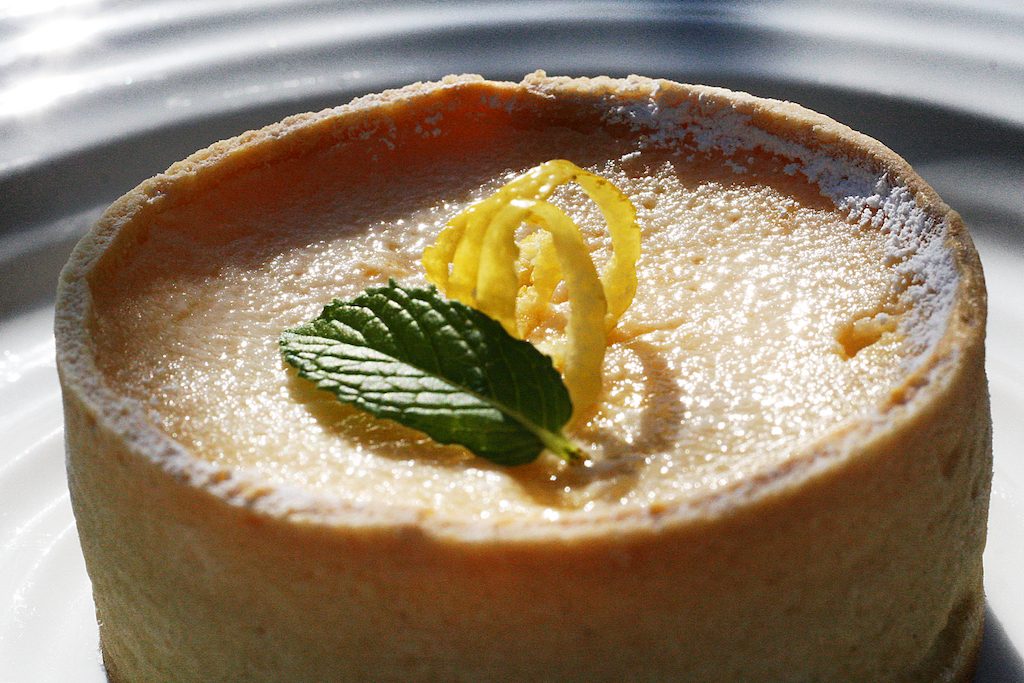
The recipe I offer here is based on the original Roux brothers’ recipe, although I have adapted the process for making the sweet pastry shell. You can use a 22cm flan tin (preferably with a removable base), smaller individual tins or professional tart rings – these have no base and require a degree of skill to use, but ultimately produce the best results. The instructions here are for tart rings. If you are using a 22cm flan tin, roll out the pastry as described and press gently into the tin. All other steps for the blind baking, trimming and sealing with egg yolk are the same.
Tarte au citron
Ingredients
- For the pastry (pâte sucrée):
- 200g flour
- 100g butter cubed
- 75g icing sugar, sifted
- Pinch salt
- 1 egg and 1 egg yolk
- For the lemon crème Anglaise:
- Zest and juice of 4 lemons
- 9 eggs
- 375g caster sugar
- 300ml double cream
Instructions
To make the pastry case, For the shell, you will need to make a sweet pastry, called pate sucre. This is a delicate process that involves chilling the dough and handling as little as possible, to avoid it becoming overworked and tough. On a clean work surface, preferably a cold marble pastry board rub the butter, icing sugar and salt together with your fingertips to make fine breadcrumbs. Make a well in the centre and pour in the 2 egg yolks. Mix lightly using a palette knife. Sift the flour into the mixture whilst at the same time working it gently with the palette knife. As soon as it begins to come together stop. dust lightly with flour and push gently into a ball. Flatten, wrap in cling film and chill for at least 1 hour. This step can be radically simplified by putting all the ingredients in a food processor and whizzing it.
Place the well chilled dough on a lightly floured cool marble slab and roll to an even thickness of 2–3mm. You will need to work quickly, as it gets more difficult as the dough warms up. You can apply a the neat trick of rolling the pastry out on cling wrap to almost its target thickness, covering and chilling again before the final shaping.
Press your tart ring into the pastry, using it like a cutter. Gently lift to circle and transfer it to a lightly greased baking sheet. Place the ring over the circle. From the remainder of the dough roll out a long strip that is equal in length to the circumference of the ring, but just slightly wider than the ring is tall. Press the strip inside the ring, carefully abutting the edges to the base. Use a brush dipped in cold water to help stick the edges together, then use the end of the brush handle to gently seal the join. The same applies to the small 1cm overlap on the side of the shell. Prick the base all over with a fork.
Place a large piece of clingfilm inside the ring that you have just lined with pastry. Fill with rice and press down to ensure all the space has been filled. This is important in ensuring an entirely uniform blind bake. Place the tart shell in the freezer for at least 30 minutes – this will prevent excessive shrinkage during cooking. Meanwhile heat the oven to 160ºC, ideally with a pizza stone in there.
Bake the shell for 10 minutes. Remove from the oven and trim the edge flush with the top of the ring using a sharp knife. Remove the rice and bake for a further 20 minutes. Brush the inside of the shell with beaten egg yolk and cook for a further 1 minute. Remove from the oven and return the shell to the freezer (this will prevent that case from over colouring in the final cook).
Reduce the heat to 140ºC.
To make the lemon custard, wash, zest and juice the lemons. In a clean bowl whisk the sugar and eggs until fully combined. Add the double cream and mix until fully incorporated. Finally, stir in the zest and juice of the lemons.
Take the tart shell out of the freezer and place onto a baking sheet. Pour in the lemon cream; this is best done with the shell in the oven, that way you can fill it up to the top without it spilling over when you transfer it into the oven. Bake for 40–50 minutes – it should be set with a hint of wobble.
Remove from the oven and leave to cool. After about 20 minutes carefully remove the taste from the ring/tin and leave to cool completely. Refrigerate before serving. Dust individual tarts or slices with icing sugar and serve plain or with a handful of fresh raspberries.
Notes
You can choose to make smaller individual tarts, which are perfect for a dinner party or entertaining. Or, you can make one larger one, to be placed in the centre of the table and divided up. Either way the basic principles for making the pastry shell are the same. If you have an ice cream maker, we recommend making too much filling – once churned, this makes the most ridiculously good lemon ice cream ever.

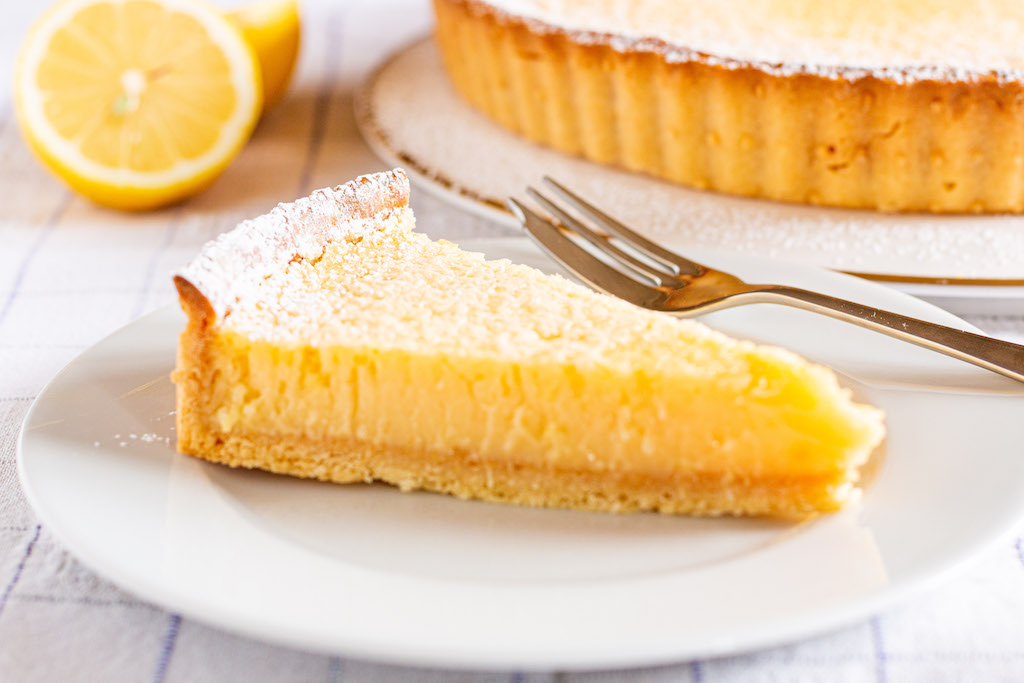


 (25 votes, average: 3.92 out of 5)
(25 votes, average: 3.92 out of 5)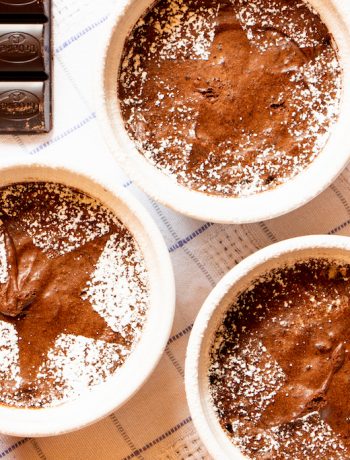
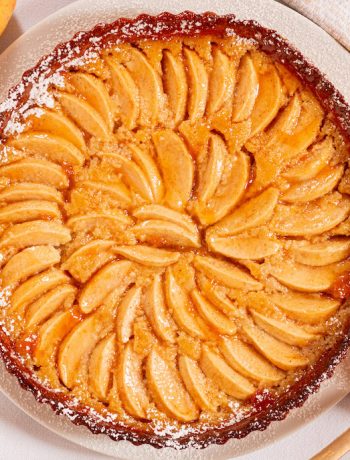
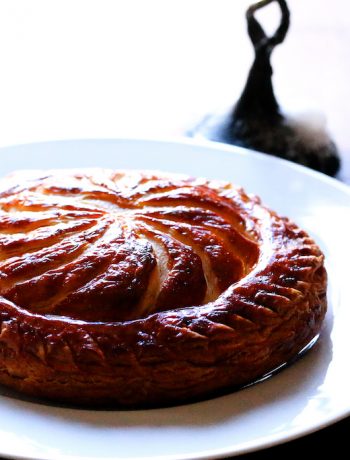
No Comments